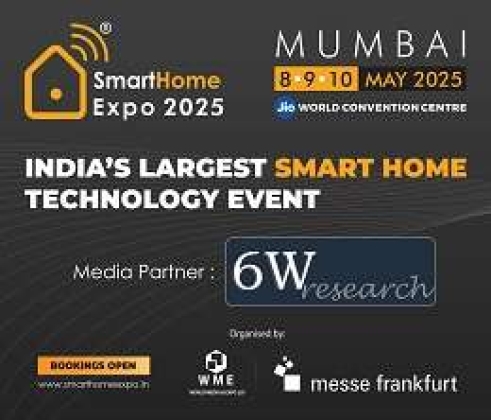US IoT in Smart Cities Market (2024-2030) | Outlook, Trends, Share, Forecast, Industry, Size, Companies, Growth, Analysis, Value & Revenue
Market Forecast By Solutions (Remote Monitoring, Real-time Location System, Data Management, Reporting and analytics, Security, Network Management), By Application (Smart Transportation, Smart Building, Smart Utilities, Smart Citizen Services), By Offering (Solutions, Services) And Competitive Landscape
| Product Code: ETC4424462 | Publication Date: Jul 2023 | Updated Date: Mar 2024 | Product Type: Report | |
| Publisher: 6Wresearch | No. of Pages: 85 | No. of Figures: 45 | No. of Tables: 25 | |
US IoT in Smart Cities Market Highlights
| Report Name | US IoT in Smart Cities Market |
| Forecast period | 2024-2030 |
| CAGR | 24.8% |
| Growing Sector | Construction |
Topics Covered in the US IoT in Smart Cities Market Report
The US IoT in Smart Cities market report thoroughly covers the market by solutions, by application, by offering and competitive Landscape. The report provides an unbiased and detailed analysis of the on-going market trends, opportunities/high growth areas, and market drivers which would help the stakeholders to devise and align their market strategies according to the current and future market dynamics.
US IoT in Smart Cities Market Synopsis
The United States IoT in Smart Cities market has experienced remarkable growth over recent years, driven by an increasing demand for efficient urban management and sustainable development. This burgeoning industry is poised to transform urban landscapes, optimizing everything from traffic and waste management to energy use and public safety. With the integration of IoT devices and platforms, cities across the U.S. are becoming more responsive and intelligent, thereby enhancing the quality of life for their inhabitants and creating a more sustainable future. Additionally, one of the most prominent trends in the IoT in Smart Cities sector is the increasing deployment of smart sensors and devices in urban infrastructure. These sensors collect real-time data on various aspects of city life, such as traffic flow, air quality, and energy consumption. This data is then analyzed and used to improve city services, making them more efficient and responsive to the needs of residents. Additionally, there is a growing focus on sustainability, with IoT technologies being leveraged to monitor and reduce emissions, manage waste more effectively, and promote the use of renewable energy sources. Another trend is the rise of smart mobility solutions, such as intelligent traffic management systems and connected public transportation, aimed at reducing congestion and improving the urban commute.
According to 6Wresearch, US IoT in Smart Cities market size is projected to grow at a CAGR of 24.8% during 2024-2030. Several key growth drivers are propelling the expansion of the IoT in Smart Cities market in the United States. Foremost among these is the federal and local government support for smart city initiatives, including substantial investments and favorable policies aimed at modernizing infrastructure with IoT technologies. This governmental backing not only provides the necessary funding but also fosters public-private partnerships critical for deploying smart city solutions. Another significant driver is the advancement in IoT technologies, which has led to more robust, secure, and cost-effective smart devices and platforms. This technological evolution enables cities to implement IoT solutions on a larger scale and at a lower cost than before. Additionally, the increasing awareness and demand for sustainable urban living among the U.S. population have spurred cities to adopt smart technologies that promise environmental sustainability and improved quality of life.
Government Initiatives Introduced in the US IoT in Smart Cities Market
To support and accelerate the integration of IoT technologies within smart cities, government entities at both the federal and local levels have been proactive. Initiatives such as grants for innovative technology projects, tax incentives for companies developing IoT solutions, and public competitions to solve urban challenges using technology are spearheading this movement. For example, the U.S. Department of Transportation's Smart City Challenge encouraged cities across the country to develop ideas for an integrated, smart transportation system that would use IoT to solve critical municipal challenges. Consistently, these actions have heightened the US IoT in Smart Cities Market Share. Further, this blend of encouragement and financial support from government bodies is crucial in driving the development and implementation of smart city projects, showcasing a commitment to leveraging technology for societal advancement and sustainability.
Key Players in the US IoT in Smart Cities Market
Several key companies are at the forefront of pioneering smart city solutions, leveraging IoT technologies to drive urban innovation. Companies like Cisco and IBM have long been involved in smart city projects, providing comprehensive IoT platforms that facilitate everything from traffic management to energy efficiency. Google's parent company, Alphabet, has also stepped into the arena with Sidewalk Labs, focusing on sustainable urban development through digital innovations. Siemens and Schneider Electric are pivotal in integrating smart grid technologies and energy management systems, critical components of the smart city infrastructure. In addition, the businesses’ clasp enormous US IoT in Smart Cities Market Revenues. Further, these companies, among others, play a significant role in transforming urban environments into more connected, efficient, and sustainable spaces, illustrating the dynamic synergy between technology and city life.
Future Insights of the US IoT in Smart Cities Market
Looking ahead, the trajectory of smart cities is poised for significant evolution. Advances in artificial intelligence (AI), machine learning, and data analytics are expected to enhance the capabilities of IoT technologies, enabling more responsive and adaptive smart city solutions. The integration of these technologies can lead to the development of predictive models for traffic management, energy consumption, and public safety, making urban areas not just smarter but also more intuitive to the needs of their residents. Furthermore, as cities continue to grow, the challenge of sustainable development becomes increasingly critical. Smart city initiatives, therefore, are likely to focus more on creating green, energy-efficient urban spaces that promote the well-being of citizens while minimizing environmental impact. In this context, collaboration between public and private sectors, along with community engagement, will be key to realizing the full potential of smart cities. The future of urban living is undeniably digital, promising a world where technology and data drive improvements in quality of life, economic development, and environmental sustainability.
Market Analysis by Solution
According to Ravi Bhandari, Research Head, 6Wresearch, in line with the evolution of smart cities, several types of solutions stand out for their contributions to creating more efficient, safe, and sustainable urban environments. Remote Monitoring systems provide a means to oversee city infrastructure in real time, enabling swift responses to issues like traffic congestion or utility failures. Real-Time Location Systems (RTLS) enhance navigation, asset tracking, and emergency response by precisely tracking the movement of people and assets. Data Management solutions are crucial for handling the vast amounts of information generated by urban activities, ensuring its organization, storage, and accessibility for decision-making purposes. Reporting and Analytics tools convert raw data into actionable insights, guiding city planners in optimizing resources and services. Lastly, Security measures are paramount in protecting the digital and physical realms of smart cities, safeguarding data, infrastructure, and citizens from cyber threats and physical dangers. Together, these solutions form the backbone of smart city infrastructure, driving advancements in urban living.
Market Analysis by Application
Within the framework of smart city solutions, a variety of applications emerge as pillars of the smart urban ecosystem. Smart Transportation systems utilize advanced technologies like IoT and AI to improve traffic flow, reduce congestion, and enhance public transit experiences through real-time data analysis and management. Smart Buildings leverage automation and energy-efficient technologies to reduce energy consumption, optimize space usage, and improve occupant comfort, contributing to the overall sustainability of urban environments. Smart Utilities employ digital tools in the management of water, waste, and electricity to ensure efficient service delivery, outage management, and resource conservation. Finally, Smart Citizen Services enhance the quality of life by providing residents with easy access to public information, enabling more efficient communication with local authorities, and facilitating community engagement activities. Collectively, these applications drive the transition towards more livable, resilient, and responsive cities.
Key Attractiveness of the Report
- 10 Years Market Numbers.
- Historical Data Starting from 2020 to 2023.
- Base Year: 2023.
- Forecast Data until 2030.
- Key Performance Indicators Impacting the Market.
- Major Upcoming Developments and Projects.
Key Highlights of the Report
- US IoT in Smart Cities Market Overview
- US IoT in Smart Cities Market Outlook
- US IoT in Smart Cities Market Forecast
- Market Size of US IoT in Smart Cities Market, 2023
- Forecast of US IoT in Smart Cities Market, 2030
- Historical Data and Forecast of US IoT in Smart Cities Revenues & Volume for the Period 2020 - 2030
- US IoT in Smart Cities Market Trend Evolution
- US IoT in Smart Cities Market Drivers and Challenges
- US IoT in Smart Cities Price Trends
- US IoT in Smart Cities Porter's Five Forces
- US IoT in Smart Cities Industry Life Cycle
- Historical Data and Forecast of US IoT in Smart Cities Market Revenues & Volume By Solutions for the Period 2020 - 2030
- Historical Data and Forecast of US IoT in Smart Cities Market Revenues & Volume By Remote Monitoring for the Period 2020 - 2030
- Historical Data and Forecast of US IoT in Smart Cities Market Revenues & Volume By Real-time Location System for the Period 2020 - 2030
- Historical Data and Forecast of US IoT in Smart Cities Market Revenues & Volume By Data Management for the Period 2020 - 2030
- Historical Data and Forecast of US IoT in Smart Cities Market Revenues & Volume By Reporting and analytics for the Period 2020 - 2030
- Historical Data and Forecast of US IoT in Smart Cities Market Revenues & Volume By Security for the Period 2020 - 2030
- Historical Data and Forecast of US IoT in Smart Cities Market Revenues & Volume By Network Management for the Period 2020 - 2030
- Historical Data and Forecast of US IoT in Smart Cities Market Revenues & Volume By Application for the Period 2020 - 2030
- Historical Data and Forecast of US IoT in Smart Cities Market Revenues & Volume By Smart Transportation for the Period 2020 - 2030
- Historical Data and Forecast of US IoT in Smart Cities Market Revenues & Volume By Smart Building for the Period 2020 - 2030
- Historical Data and Forecast of US IoT in Smart Cities Market Revenues & Volume, By Smart Utilities for the Period 2020 - 2030
- Historical Data and Forecast of US IoT in Smart Cities Market Revenues & Volume, By Smart Citizen Services for the Period 2020 - 2030
- Historical Data and Forecast of US IoT in Smart Cities Market Revenues & Volume, By Offering for the Period 2020 - 2030
- Historical Data and Forecast of US IoT in Smart Cities Market Revenues & Volume, By Solutions for the Period 2020 - 2030
- Historical Data and Forecast of US IoT in Smart Cities Market Revenues & Volume, By Services for the Period 2020 - 2030
- US IoT in Smart Cities Import Export Trade Statistics
- Market Opportunity Assessment, By Solutions
- Market Opportunity Assessment, By Application
- Market Opportunity Assessment, By Offering
- US IoT in Smart Cities Top Companies Market Share
- US IoT in Smart Cities Competitive Benchmarking, By Technical and Operational Parameters
- US IoT in Smart Cities Company Profiles
- US IoT in Smart Cities Key Strategic Recommendations
Markets Covered
The US IoT in Smart Cities market report provides a detailed analysis of the following market segments:
By Solutions
- Remote Monitoring
- Real-Time Location System
- Data Management
- Reporting and Analytics
- Security
- Network Management
By Application
- Smart Transportation
- Smart Building
- Smart Utilities
- Smart Citizen Services
By Offering
- Solution
- Services
US IoT In Smart Cities Market (2024-2030): FAQs
| 1 Executive Summary |
| 2 Introduction |
| 2.1 Key Highlights of the Report |
| 2.2 Report Description |
| 2.3 Market Scope & Segmentation |
| 2.4 Research Methodology |
| 2.5 Assumptions |
| 3 US IoT in Smart Cities Market Overview |
| 3.1 US Country Macro Economic Indicators |
| 3.2 US IoT in Smart Cities Market Revenues & Volume, 2020 & 2030F |
| 3.3 US IoT in Smart Cities Market - Industry Life Cycle |
| 3.4 US IoT in Smart Cities Market - Porter's Five Forces |
| 3.5 US IoT in Smart Cities Market Revenues & Volume Share, By Solutions, 2020 & 2030F |
| 3.6 US IoT in Smart Cities Market Revenues & Volume Share, By Application, 2020 & 2030F |
| 3.7 US IoT in Smart Cities Market Revenues & Volume Share, By Offering, 2020 & 2030F |
| 4 US IoT in Smart Cities Market Dynamics |
| 4.1 Impact Analysis |
| 4.2 Market Drivers |
| 4.3 Market Restraints |
| 5 US IoT in Smart Cities Market Trends |
| 6 US IoT in Smart Cities Market, By Types |
| 6.1 US IoT in Smart Cities Market, By Solutions |
| 6.1.1 Overview and Analysis |
| 6.1.2 US IoT in Smart Cities Market Revenues & Volume, By Solutions, 2020 - 2030F |
| 6.1.3 US IoT in Smart Cities Market Revenues & Volume, By Remote Monitoring, 2020 - 2030F |
| 6.1.4 US IoT in Smart Cities Market Revenues & Volume, By Real-time Location System, 2020 - 2030F |
| 6.1.5 US IoT in Smart Cities Market Revenues & Volume, By Data Management, 2020 - 2030F |
| 6.1.6 US IoT in Smart Cities Market Revenues & Volume, By Reporting and analytics, 2020 - 2030F |
| 6.1.7 US IoT in Smart Cities Market Revenues & Volume, By Security, 2020 - 2030F |
| 6.1.8 US IoT in Smart Cities Market Revenues & Volume, By Network Management, 2020 - 2030F |
| 6.2 US IoT in Smart Cities Market, By Application |
| 6.2.1 Overview and Analysis |
| 6.2.2 US IoT in Smart Cities Market Revenues & Volume, By Smart Transportation, 2020 - 2030F |
| 6.2.3 US IoT in Smart Cities Market Revenues & Volume, By Smart Building, 2020 - 2030F |
| 6.2.4 US IoT in Smart Cities Market Revenues & Volume, By Smart Utilities, 2020 - 2030F |
| 6.2.5 US IoT in Smart Cities Market Revenues & Volume, By Smart Citizen Services, 2020 - 2030F |
| 6.3 US IoT in Smart Cities Market, By Offering |
| 6.3.1 Overview and Analysis |
| 6.3.2 US IoT in Smart Cities Market Revenues & Volume, By Solutions, 2020 - 2030F |
| 6.3.3 US IoT in Smart Cities Market Revenues & Volume, By Services, 2020 - 2030F |
| 7 US IoT in Smart Cities Market Import-Export Trade Statistics |
| 7.1 US IoT in Smart Cities Market Export to Major Countries |
| 7.2 US IoT in Smart Cities Market Imports from Major Countries |
| 8 US IoT in Smart Cities Market Key Performance Indicators |
| 9 US IoT in Smart Cities Market - Opportunity Assessment |
| 9.1 US IoT in Smart Cities Market Opportunity Assessment, By Solutions, 2020 & 2030F |
| 9.2 US IoT in Smart Cities Market Opportunity Assessment, By Application, 2020 & 2030F |
| 9.3 US IoT in Smart Cities Market Opportunity Assessment, By Offering, 2020 & 2030F |
| 10 US IoT in Smart Cities Market - Competitive Landscape |
| 10.1 US IoT in Smart Cities Market Revenue Share, By Companies, 2023 |
| 10.2 US IoT in Smart Cities Market Competitive Benchmarking, By Operating and Technical Parameters |
| 11 Company Profiles |
| 12 Recommendations |
| 13 Disclaimer |
- Single User License$ 1,995
- Department License$ 2,400
- Site License$ 3,120
- Global License$ 3,795
Search
Related Reports
- India Smart Locker Market (2024-2030) | Segmentation, Size & Revenue, Growth, Industry, Value, Companies, Outlook, Share, Forecast, Trends, Competitive Landscape, Analysis
- E-House Market (2024-2030) | Size, Analysis, Revenue, Trends, Growth, Forecast, industry, Outlook
- Cogeneration Equipment Market (2024-2030) | Revenue, Analysis, Trends, Value, Outlook, Companies, Forecast, Share, Industry, Size & Growth
- Carbon Credit Market (2024-2030) | Trends, Value, Revenue, Outlook, Forecast, Size, Analysis, Growth, Industry, Share, Segmentation
- Chocolate Market (2024-2030) | Size, Value, Industry, Share, Revenue, Forecast, Trends, Growth, Analysis
- Czech Republic Crude Sulfate Turpentine Market Outlook | Size, Forecast, Growth, Share, Analysis, Trends, Value, Companies, COVID-19 IMPACT, Revenue & Industry
- Poland Crude Sulfate Turpentine Market Outlook | Revenue, Value, Share, Growth, Forecast, COVID-19 IMPACT, Size, Industry, Analysis, Trends & Companies
- Germany Stainless Steel Commercial Kitchen Appliances Market (2024-2030) | Segmentation, Growth, Outlook, Share, Analysis, Industry, Companies, Value, Size & Revenue, Forecast, Trends
- Bus Market (2024-2030) | Trends, Size, Value, Forecast, Growth, Share, Companies, Analysis, Revenue & Industry
- Canned Food Market (2024-2030) | companies, industry, Size, Share, Revenue, Forecast, Trends, Analysis, Growth, Value, Outlook
Industry Events and Analyst Meet
Our Clients
Whitepaper
- Middle East & Africa Commercial Security Market Click here to view more.
- Middle East & Africa Fire Safety Systems & Equipment Market Click here to view more.
- GCC Drone Market Click here to view more.
- Middle East Lighting Fixture Market Click here to view more.
- GCC Physical & Perimeter Security Market Click here to view more.
6WResearch In News
- India's Printer Market Faces 20.7% Decline in Q4 2023: Epson and HP Lead Amidst Downturn
- India's Camera Market Sees 8.9% Decline in Q4 2023; Canon Leads with 38.4% Share
- Doha a strategic location for EV manufacturing hub: IPA Qatar
- Demand for luxury TVs surging in the GCC, says Samsung
- Empowering Growth: The Thriving Journey of Bangladesh’s Cable Industry
- The future of gaming industry in the Philippines













